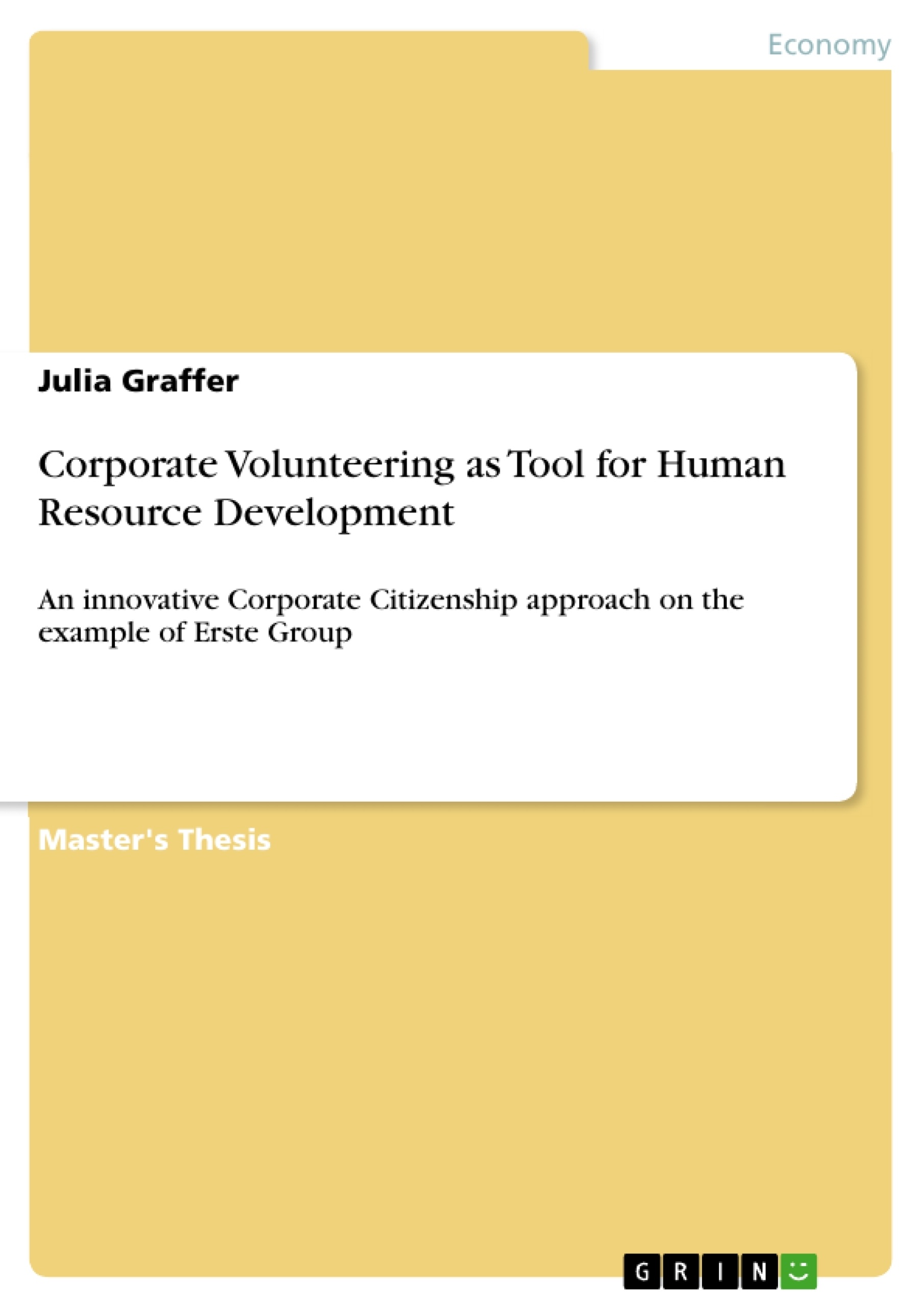Corporate Social Responsibility (CSR) related topics are perceptibly on the rise – in the media1, in advertisements, in academic education and research as well as in political discourse. Reasons for this trend are globalization with the associated increased power of corporations as well as the current financial crisis – i.a. caused by unethical corporate behavior – which led to a changing consumer attitude and a modified public opinion regarding corporate responsibilities. All of this forces companies to act more sustainably and responsibly in order not to lose their ‘license to operate’.
The ways in which companies can perform CSR are manifold. One opportunity is to implement Corporate Volunteering (CV): Originating in the United States in the late 1970s it has also become an issue of increasing importance in Europe - particularly since the European Commission designated 2011 as the ‘European year of volunteering’.
The skill development which volunteering entails is one reason why more and more companies these days conduct CV programs. The qualities in question, which are honed through CV are manifold – depending on the type of service.
In this regard, Corporate Volunteering apparently has the potential of creating not only a winwin but a triple win situation since, apart from the company and the social institution, the
employees are also supposed to benefit.
What academic research particularly has not focused on so far is the often mentioned but – in most cases – not discussed advantage for Human Resource Development (HRD), which is a quite obvious one in my opinion: Since the improvement and acquirement of knowledge
and skills as well as – broadly speaking – the employees’ attitude towards their work and employer are central points in a company’s Human Resource Development activities, my thesis will concentrate on the implications of Corporate Volunteer programs concerning the
development of new skills and attitudes. This will be illustrated by an extensive literature review as well as a concrete, practical example, namely Erste Group in Austria.
Inhaltsverzeichnis (Table of Contents)
- INTRODUCTION
- RELEVANCE
- RESEARCH QUESTION & METHODS
- OUTLINE
- CORPORATE VOLUNTEERING - AN INNOVATIVE APPROACH OF CORPORATE CITIZENSHIP
- CORPORATE CITIZENSHIP (CC) - THE CONCEPTUAL FRAME
- The parameters of the 21st century.
- What is Corporate Citizenship?
- Different conceptions of CC.
- CORPORATE VOLUNTEERING (CV)
- What is Corporate Volunteering?
- CV in the US and in German-speaking countries.
- Reasons and strategy for applying CV.
- Types.
- Benefits
- Critique.
- HUMAN RESOURCE DEVELOPMENT
- FOUNDATIONS OF HUMAN RESOURCE DEVELOPMENT
- CREATING COMPETITIVE ADVANTAGE THROUGH HRD
- Needs assessment.
- How to satisfy an organization's developmental needs.
- Evaluation and Transfer.
- NEW DEMANDS ON HRD.
- Changes in the work sphere underlying HRD.
- The significance of 'softer' skills & emotional intelligence.
- Learning in Organizations.
- THE SIGNIFICANCE OF CV IN HUMAN RESOURCE DEVELOPMENT
- PRACTICAL EXAMPLES
- EMPIRICAL STUDY
- THE CASE
- RESEARCH METHOD
- Qualitative interviews
- Qualitative content analysis
- FINDINGS.
- DISCUSSION.
Zielsetzung und Themenschwerpunkte (Objectives and Key Themes)
This Master's thesis examines corporate volunteering as a tool for human resource development (HRD). It focuses on how corporate volunteering can be an innovative approach to corporate citizenship and how it can contribute to the development of employees. The thesis explores the theoretical foundations of corporate volunteering, analyzes the benefits and critiques of this approach, and examines its potential in the context of HRD.
- The evolution and contemporary relevance of Corporate Citizenship (CC)
- The concept of Corporate Volunteering (CV) and its various forms
- The role of HRD in fostering organizational competitiveness
- The potential of CV as a tool for employee development and organizational effectiveness
- An empirical study based on the Erste Group case, exploring the practical implementation and impact of CV on HRD
Zusammenfassung der Kapitel (Chapter Summaries)
The thesis begins with an introduction, outlining its relevance, research question, methods, and structure. Chapter II defines the concept of corporate citizenship and explores the various forms and potential of corporate volunteering. Chapter III delves into the theoretical foundations of HRD, focusing on creating competitive advantage through HRD and the emerging demands on HRD in a changing world. Chapter IV examines the significance of CV in HRD, exploring practical examples of its application. Chapter V presents an empirical study based on the Erste Group case, detailing the research methods and findings, and finally, Chapter VI concludes the thesis with a discussion of the key findings and future research directions.
Schlüsselwörter (Keywords)
The central themes and concepts explored in this thesis include corporate citizenship, corporate volunteering, human resource development, employee development, organizational effectiveness, ethical behavior, skills development, learning in organizations, empirical research, case study, Erste Group, and qualitative content analysis.
- Quote paper
- Julia Graffer (Author), 2011, Corporate Volunteering as Tool for Human Resource Development, Munich, GRIN Verlag, https://www.grin.com/document/176891



